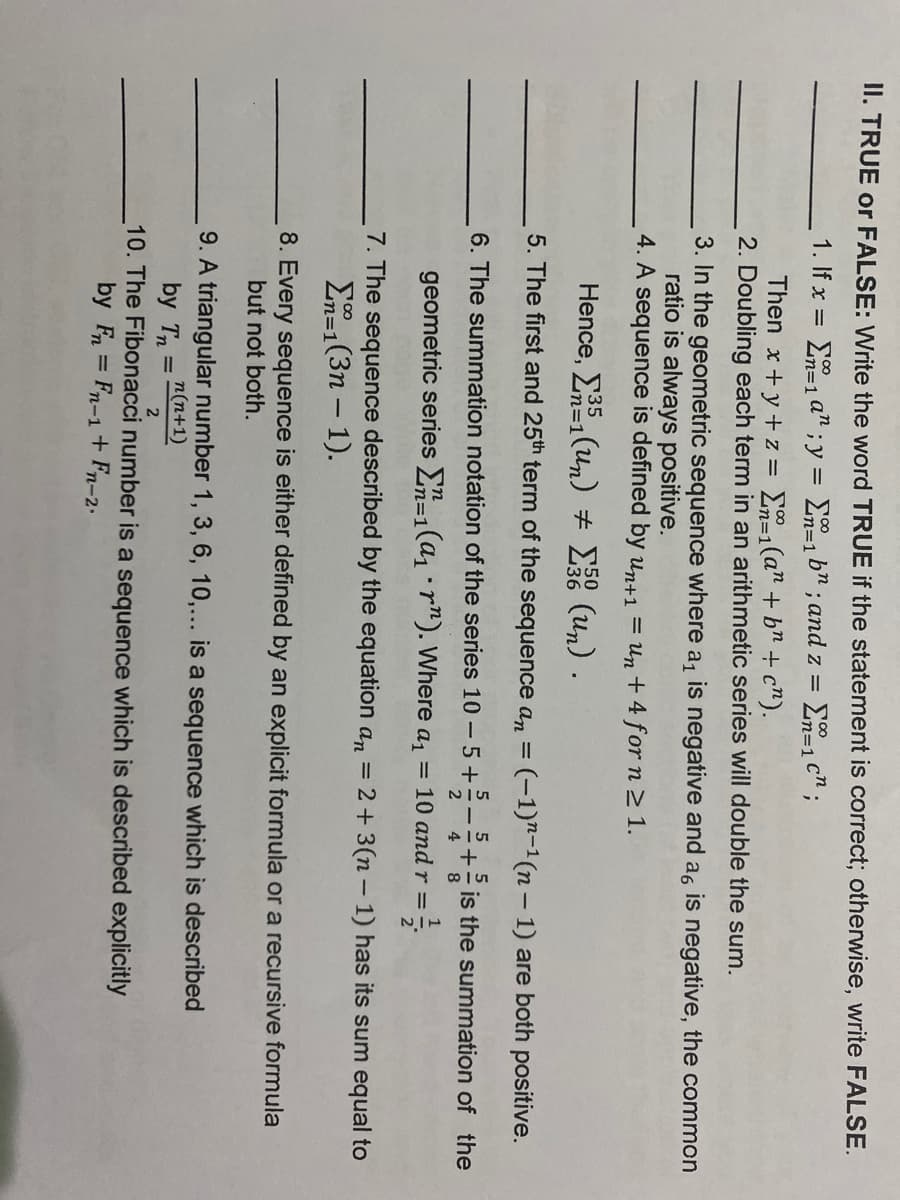Algebra & Trigonometry with Analytic Geometry
13th Edition
ISBN:9781133382119
Author:Swokowski
Publisher:Swokowski
Chapter10: Sequences, Series, And Probability
Section10.3: Geometric Sequences
Problem 81E
Related questions
Question
100%

Transcribed Image Text:II. TRUE or FALSE: Write the word TRUE if the statement is correct; otherwise, write FALSE.
1. If x = E=1 a" ; y = E=1 b; and z =
%3D1
Then x+y+z = En=1(a" + b" + c").
2. Doubling each term in an arithmetic series will double the sum.
3. In the geometric sequence where a, is negative and a, is negative, the common
ratio is always positive.
4. A sequence is defined by un+1 = Un + 4 for n 2 1.
Hence, E (un) # E (un) .
35
m%3D1
5. The first and 25th term of the sequence an = (-1)"-1(n – 1) are both positive.
5
6. The summation notation of the series 10 – 5 +2-+ is the summation of the
geometric series =1(a1 · r"). Where a, = 10 and r =
7. The sequence described by the equation an = 2+3(n – 1) has its sum equal to
E-1(3n – 1).
n=D1
8. Every sequence is either defined by an explicit formula or a recursive formula
but not both.
9. A triangular number 1, 3, 6, 10,... is a sequence which is described
n(n+1)
by Tn =
10. The Fibonacci number is a sequence which is described explicitly
by Fn = Fn-1+ Fn-2-
Expert Solution
This question has been solved!
Explore an expertly crafted, step-by-step solution for a thorough understanding of key concepts.
Step by step
Solved in 2 steps with 1 images

Recommended textbooks for you

Algebra & Trigonometry with Analytic Geometry
Algebra
ISBN:
9781133382119
Author:
Swokowski
Publisher:
Cengage


Glencoe Algebra 1, Student Edition, 9780079039897…
Algebra
ISBN:
9780079039897
Author:
Carter
Publisher:
McGraw Hill

Algebra & Trigonometry with Analytic Geometry
Algebra
ISBN:
9781133382119
Author:
Swokowski
Publisher:
Cengage


Glencoe Algebra 1, Student Edition, 9780079039897…
Algebra
ISBN:
9780079039897
Author:
Carter
Publisher:
McGraw Hill

College Algebra (MindTap Course List)
Algebra
ISBN:
9781305652231
Author:
R. David Gustafson, Jeff Hughes
Publisher:
Cengage Learning